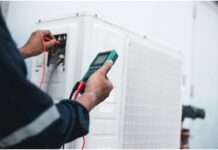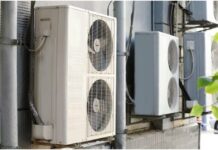Water is the most destructive force in nature. When it floods your home, the damage is unimaginable; whether it’s due to broken pipes, leaking appliances, or even more severe issues like sewer backup.
That is why one cannot show a casual approach when it comes to deal with the water leakage issue in any kind of property. Be it workplace or home it is equally crucial to deal with the water damage and repair along with cleanup system on regular points of time. It ensure the best maintaince of the property and its long life as well. Services like Water damage restoration experts in Portland can also assist you in this state.
Homeowners should be aware of the devastating effects of flooding on their homes. Mold can start developing in as little as 24 hours if exposed to even a tiny amount of moisture. Moreover, water can seep through the cracks and flooring and disrupt the electrical wiring and the whole structure of the house. You may also find yourself facing safety hazards or structural problems that you overlooked until it’s too late.
For starters, stop any possible leaking points before they cause more damage. You can also call an experienced residential mold inspection professional to perform a proper drying process so that mold won’t grow. Immediate action will mitigate the damage caused by this unfortunate event.
Here are seven immediate steps you should take after the disaster has taken place:
Call Your Insurance Company
The insurance company will send out an adjuster to assess your damages and determine a covered loss. If there are questions about what was lost or damaged, documenting the values for each item and taking photos before cleanup can help resolve things faster. However, not all home insurance policies cover flood damage, so be sure to ask your agent if you’re unsure.
Protect Yourself and Your Valuables
During a disaster like flooding and water damage, the most important thing is to make sure that you and your family are safe. You can always consult a water damage advisor to help you out. However, there are several things you can do for a quick fix.
1. Turn off the power
The water and electricity don’t mix well. When you turn off the power, it’s essential to ensure that no areas are wet. Entering or standing in wet areas with the power turned on can cause severe damage.
2. Wear protective gear
When you re-enter your home, be sure to wear protective clothing and rubber boots to protect against injuries that could get affected by bacteria-filled water.
3. Protect your valuables
Ensure that all furniture is removed from wet carpets. Put tin foil under each item to not stain your rugs. You may also have to remove anything hanging on walls or doorways which mold spores could damage.
Begin With the Water Damage Repair Process Immediately
After being cleared to re-enter your home, you should begin water damage restoration 24-48 hours later. However, in many situations, the extent of water damage can only be handled by a professional cleanup company with specialized equipment and expertise for this type of situation.
Mold and mildew can quickly spread in your home if you don’t care about the water damage. It’s important to start removing flooring, drywall, insulation, etc. Clean out furniture that may need drying or throwing away depending on how badly it got wet. Start this process immediately to avoid mold growth.
Dry Out the Water Damage and Eliminate Humidity
Removing standing water is a challenging task that requires both time and patience. You can use many tools for this job, such as buckets or plastic tubs to scoop up excess water. You can also use a mop to soak the water, but rent an industrial wet/dry vacuum unit if these aren’t available. Once most of the water is gone, let everything dry out before using a dehumidifier, significantly speeding the drying process.
Identify Mold
Mold is hard to remove once it has gained a toehold. The quicker you get your flooded items dry and away from moisture, the less likely you will lose them. You can also take precautions while remedying the damages that will help limit any potential for new stains or molds developing within minutes of drying out wet areas.
Decide What Should Be Restored
Flooding can be a terrifying experience for homeowners. It’s not just about the water damage; you may also need to replace flooring or wall sections that this disaster has damaged. The repairs can be complicated. Some people might not know what is best for their property. However, if you want peace of mind knowing that everything will get taken care of, hiring an expert would help.
When Should You Move Back
The joy of returning to your clean, dry home after a disaster is immeasurable. You can move back once you have approvals from insurance companies, local government officials (in case there are natural disasters), and so forth.
3 Things You Should Never Do After A Water Damage Incident
- Avoid standing water if your home’s electricity is still on. Even though you may not see an electrical hazard lurking, wet areas pose some serious risks and dangers to those unaware of them. It’s best to be cautious when dealing with such unpredictable environments that can have unexpected consequences at any time.
- Don’t use your household vacuum cleaner to remove water. It may seem like a good idea at first, but you run the risk of electrocution.
- Never use overhead lights. They could cause more damage and cause fires! Don’t use your lights if you have water damage in the ceiling from an upper-level bathroom leak.
Conclusion
Water damage doesn’t have to be scary. The most important thing is to take every measure and ensure that your home and family are safe. Water damage incidents can happen to anyone at any time. You must know how to respond correctly to it. Failing to respond quickly can not only be detrimental to your property and your health. Therefore, to ensure the safety of those around you, make sure you’re always prepared.




















